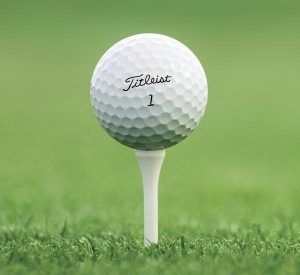
The dimples that cover the surface of golf balls revolutionised the game when they were introduced the century. A well driven modern golf ball and travel up to 300yds (275 m). If it were smooth, it would only travel about 70yds (65 m).
When golf was first played in Holland and Scotland in the 15th century, smooth leather balls stuffed with feathers were used. In the 19th century, balls made of rubbery substance called gutta-percha were introduced. They were found to fly farther after being marked my club blows.
Makers began pattering balls with crisscrossed grooves. Then, in 1906, when rubber cored balls had arrived, the first dimpled ball was produced.
Why do Dimples help the ball to go so far? When a ball is in flight, a thin layer of air clings to its surface at the front. As the air passes over the ball, it breaks away from the surface, setting up turbulent eddies behind. The eddying air draws its energy from the ball, slowing it down. Dimples cause the air to cling to the surface until it is well towards the rear of the ball. When it finally breaks away, and narrower stream of turbulence is created, causing less drag than for a smooth ball.
The Dimples have another purpose as well. Since the golf ball always spins backwards when it is struck, the dimples carry air upwards over the top. The air going over-the-top has to travel faster than the air going underneath because of this rotation. This creates a lower pressure above than below, so the ball experiences lift which keeps it in the air longer.
Picture Credit : Google

